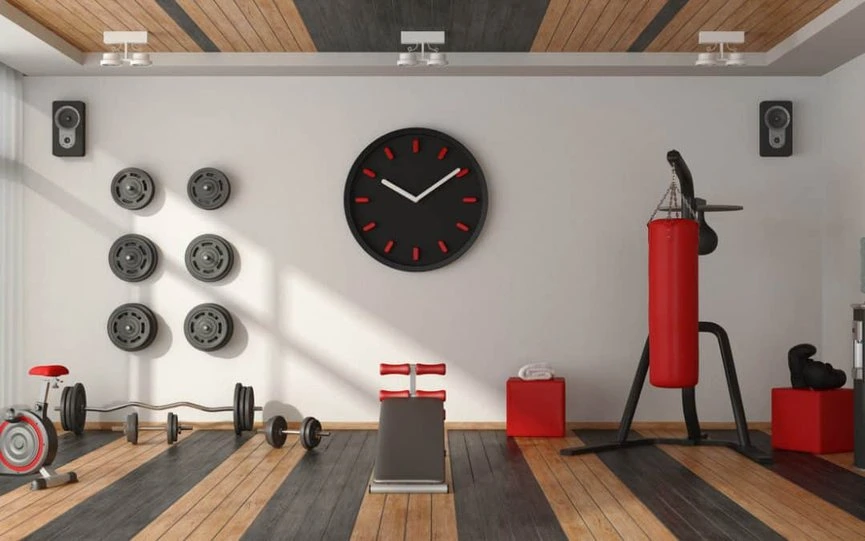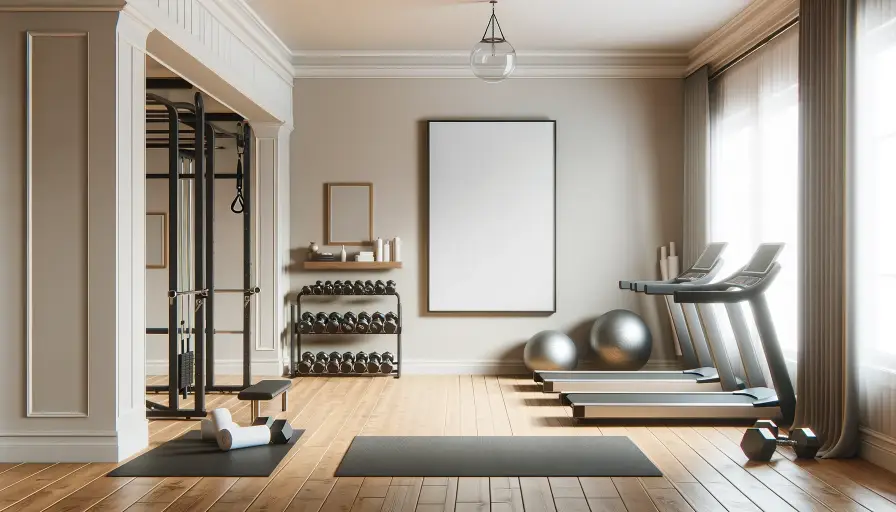Tips For Designing A Home Gym

Designing a home gym can be a rewarding and exciting project that transforms your living space into a personal fitness sanctuary. In "Tips For Designing A Home Gym," you’ll discover practical and innovative ideas to create a workout area that suits your needs and helps you stay motivated. From choosing the right equipment and optimizing your layout to ensuring proper lighting and ambiance, this article offers valuable insights to help you achieve your fitness goals right from the comfort of your home. Have you ever wondered how you can design the perfect home gym that not only meets your fitness goals but also fits seamlessly into your home environment? Whether you're a fitness novice or a seasoned athlete, creating a well-designed home gym can transform your workout routines and make fitness more convenient and enjoyable. Let's explore how you can craft the ideal workout space at home with some friendly, practical tips.
Understanding Your Fitness Goals
Identify Your Workout PreferencesBefore you start purchasing equipment or planning the layout, take some time to think about your fitness goals and the types of workouts you enjoy. Do you prefer strength training, cardio, yoga, or a combination of various activities? Knowing this will help you choose the right equipment and configure your space accordingly.
Short-Term and Long-Term GoalsConsider both your short-term and long-term fitness goals. Short-term goals might include losing a specific amount of weight or improving your cardiovascular health, while long-term goals might focus on building muscle mass or maintaining overall fitness. Your home gym should have the flexibility to evolve as your fitness journey progresses.
Choosing the Right Space
Evaluate Available SpaceAssess the available space in your home for setting up a gym. It could be a spare room, the garage, a basement, or even a corner of your living room. Measure the dimensions to understand what can fit without overcrowding the area.
Consider Space RequirementsDifferent types of equipment and workouts require varying amounts of space. A yoga practice might only need a small corner with enough floor space for a mat, while strength training with free weights will need more room for both equipment and safety. Take this into account when choosing your spot.

This image is property of static01.nyt.com.
Essentials for Every Home Gym
FlooringThe right flooring is crucial for both safety and comfort. Here are some options to consider:
Type Pros Cons Rubber Flooring Durable, shock-absorbing, easy to clean Can be expensive Foam Tiles Affordable, comfortable, easy to install Less durable, can dent over time Carpet Soft on the feet, good for floor exercises Not ideal for heavy equipment, difficult to clean Lighting and VentilationGood lighting can boost your mood and make your workouts more enjoyable. Natural light is ideal, but if that’s not available, consider bright, full-spectrum lighting. Also, ensure that your gym space is well-ventilated to keep the air fresh and cool during intense workout sessions.
Selecting the Right Equipment
Basic Equipment for BeginnersIf you're just starting out, keep it simple. Here's a list of basic essentials for a versatile home gym:
- Yoga Mat: Perfect for stretching, yoga, and floor exercises.- Resistance Bands: Great for strength training and flexibility exercises.
- Dumbbells: Start with a few pairs in different weights.
- Jump Rope: Ideal for cardio workouts in minimal space.
- Treadmill or Elliptical: Excellent for cardio workouts.
- Bench Press: Essential for serious strength training.
- Kettlebells: Versatile and can be used for a variety of exercises.
- Multi-Gym Station: A comprehensive solution for full-body workouts.

This image is property of static01.nyt.com.
Designing an Efficient Layout
Zoning Your SpaceDivide your gym into different zones based on the types of workouts you plan to do. Creating separate areas for cardio, strength training, and stretching can make your workouts more organized and efficient.
Efficient Use of SpaceArrange equipment in a way that maximizes the use of space while maintaining safety. Ensure there’s enough room to move freely between pieces of equipment. Adjustable and foldable equipment can save space and offer flexibility.
Creating a Motivating Environment
Décor and AmbianceA well-decorated gym can enhance your workout experience. Choose colors that energize you, add motivational posters, and even a sound system for your favorite workout tunes. Your gym should be a place where you look forward to spending time.
Technology IntegrationConsider incorporating technology to track your progress and keep you motivated. Fitness trackers, smart mirrors, and streaming services for workout videos can add a modern touch to your gym.

This image is property of www.tonal.com.
Budgeting Your Home Gym
Setting a BudgetIt's easy to go overboard with spending on gym equipment, so it's essential to set a budget from the start. Identify what's most important to you and allocate funds accordingly. Remember, you can always start small and expand your gym over time.
Cost-Effective AlternativesYou don’t need to break the bank to build a functional home gym. Second-hand equipment, DIY solutions, and minimalistic setups can be highly effective. For example, resistance bands, bodyweight exercises, and inexpensive cardio tools like jump ropes can offer a fantastic workout without hefty costs.
Safety and Maintenance
Safety FirstEnsure your gym design prioritizes safety. Proper flooring, secure placement of equipment, and adequate space for movement are critical. Always follow the manufacturer’s guidelines for equipment setup and use.
Regular MaintenanceKeeping your gym equipment in good shape is vital for both safety and effectiveness. Regularly clean your equipment, check for wear and tear, and perform necessary maintenance. This not only extends the life of your equipment but also ensures a safe workout environment.

This image is property of cdn.shortpixel.ai.
Adapting Your Gym for All Seasons
Temperature ControlYour gym should be comfortable year-round. If your gym is in a place like the garage or basement, consider insulation, heaters, or fans to control the temperature. This makes your workouts more pleasant and avoids the excuse of "It's too cold/hot to workout!"
Seasonal AdjustmentsAdapt your workouts and equipment setup for seasonal changes. For example, you might prefer more indoor cardio options during the colder months and take advantage of outdoor running or cycling when the weather is nice.
Personalizing Your Gym Experience
Customization to Fit Your NeedsTailor your gym to suit your specific fitness needs and preferences. Whether it's a unique piece of equipment or a particular workout zone, customization can make your gym feel truly yours and enhance your workout experience.
Fun and Functional AccessoriesIncorporate accessories that make your workouts more enjoyable and efficient. Items like foam rollers, balance balls, or even a mini-fridge for refreshing drinks can add both fun and functionality to your home gym.

This image is property of foyr.com.
Staying Motivated and Consistent
Set a RoutineOne of the benefits of a home gym is the convenience, which can help you stick to a routine. Set a regular workout schedule that fits into your daily life. Consistency is key to achieving your fitness goals.
Track Your ProgressRegularly tracking your progress can boost motivation and keep you accountable. Use fitness apps, journals, or even visual progress boards to monitor your improvements and stay driven.
Conclusion
Designing a home gym that is both functional and enjoyable is entirely achievable with a bit of planning and creativity. By understanding your fitness goals, choosing the right equipment, creating an efficient layout, and personalizing your space, you can build a home gym that supports a healthy lifestyle and makes working out a pleasure.
Whether you're starting small or dreaming big, these tips should guide you in creating a home gym that meets your needs and keeps you motivated for years to come. Happy training!
https://homegardenadvisor.shop/tips-for-designing-a-home-gym/



Comments
Post a Comment